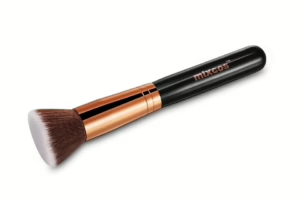The Ultimate Guide to Choosing the Right Foundation for Your Skin Type
Choosing the right foundation can feel overwhelming with the array of products on the market. From liquid to powder, matte to dewy finishes, and shades that can range from alabaster to deep mahogany, making a choice can be daunting. However, understanding your skin type is crucial to selecting a foundation that not only matches your color but also complements your skin’s characteristics. This guide aims to break down the different skin types, the various forms of foundation, and how to select the right one for your unique needs.
Understanding Your Skin Type
Before diving into foundation types, it’s essential to identify your skin type. Skin typically falls into one of five categories:
-
Normal: Balanced skin that is not too oily or dry, often characterized by a smooth texture and few imperfections.
-
Dry: Skin that lacks moisture and can appear flaky or rough. It may feel tight after cleansing and may show signs of aging more quickly.
-
Oily: Skin that produces excess sebum, leading to a shiny complexion and a propensity for breakouts and enlarged pores.
-
Combination: A mix of oily and dry areas, commonly found with an oily T-zone (forehead, nose, and chin) and drier cheeks.
- Sensitive: Skin that is prone to redness, irritation, and reactions from environmental factors or specific products.
Identifying Your Skin Type
To assess your skin type, follow these steps:
- Cleanse your face: Use a gentle cleanser to remove makeup and impurities.
- Wait: Allow your skin to rest for about an hour without applying any products.
- Observe: Pay attention to how your skin feels and looks during this time.
- If your skin feels tight and looks flaky, it is likely dry.
- If your skin appears shiny, particularly in your T-zone, it may be oily.
- If some areas are oily while others are dry, you probably have combination skin.
- If you notice redness or irritation, your skin is likely sensitive.
Types of Foundation
Once you understand your skin type, it’s easier to choose from various foundation types. Here are the most common forms:
1. Liquid Foundation
Liquid foundations come in an array of formulations and finishes, making them versatile for various skin types.
- Best for: Normal, combination, and dry skin (depending on the formulation).
Key Features:
- Can offer sheer to full coverage.
- Blends easily and can be layered for additional coverage.
- Available in matte, satin, and dewy finishes.
2. Cream Foundation
Cream foundations usually have a thicker consistency and provide a more intense coverage. They can provide a dewy finish.
- Best for: Normal to dry skin types.
Key Features:
- Offers good hydration and coverage.
- Ideal for mature skin as it can mask imperfections better.
- May feel heavy on oily skin types.
3. Powder Foundation
Powder foundations come in both pressed and loose forms.
- Best for: Oily and combination skin.
Key Features:
- Provides a matte finish and helps absorb oil.
- Can be used both alone or over liquid foundation.
- Lightweight and great for quick touch-ups.
4. Stick Foundation
Stick foundations provide a compact option that is easy to apply and blend into the skin.
- Best for: All skin types, depending on the formulation.
Key Features:
- Offers buildable coverage.
- Convenient for on-the-go application.
- Creamy formulations work well for dry skin, while matte versions suit oily skin.
5. Tinted Moisturizer/BB Cream
These products offer light coverage while providing hydration and skin benefits.
- Best for: Normal to dry skin, or anyone looking for a more natural finish.
Key Features:
- Lightweight and breathable.
- Often includes SPF and skin-loving ingredients.
- Ideal for casual wear or hotter climates.
Choosing the Right Foundation for Different Skin Types
For Normal Skin
Normal skin can handle a variety of foundation types since it has a balanced moisture level.
-
Recommended Products: Liquid foundations with a satin or dewy finish or cream foundations for a more polished look.
- Application Tip: Use a damp beauty sponge for a natural finish or a brush for more coverage.
For Dry Skin
Dry skin requires products that offer hydration and shine.
-
Recommended Products: Cream foundations or liquid foundations with hydrating formulas. Look for moisturizing ingredients like hyaluronic acid or glycerin.
- Application Tip: Use a hydrating primer underneath to create a smooth base, and apply with a beauty sponge for a dewy finish.
For Oily Skin
Oily skin benefits from mattifying foundations that control shine and have a long-wearing formulation.
-
Recommended Products: Powder foundations, mattifying liquid foundations, or stick foundations labeled as oil-free.
- Application Tip: Use a mattifying primer and set your foundation with a translucent powder to help absorb excess oil.
For Combination Skin
With both oily and dry zones, combination skin requires a balanced approach.
-
Recommended Products: Use a liquid foundation that offers a satin finish, or a powder foundation in the T-zone and a cream foundation in drier areas.
- Application Tip: Apply liquid foundation with a brush in areas that need coverage and use powder to set shine-prone spots.
For Sensitive Skin
Sensitive skin necessitates gentle formulations that minimize irritation.
-
Recommended Products: Look for mineral foundations or those free from fragrances, parabens, and alcohol.
- Application Tip: Always patch-test a new product before full application and consider applying with a brush to avoid irritation from sponges.
Foundation Matching Basics
Finding Your Shade
Shade matching is essential for a natural look. Here are steps to help you find your ideal shade:
-
Test in Natural Light: Always check shades in natural light to better understand how they work with your undertone.
-
Know Your Undertone: Undertones can be warm (yellow/golden), cool (pink/blue), or neutral (a mix). To determine yours, check the veins in your wrists. Blue veins indicate cool undertones, green veins suggest warm undertones, and a mix indicates neutral.
-
Swatch on Your Jawline: Test foundation swatches on your jawline rather than your hand for a more accurate match.
- Let It Set: Let the foundation settle on your skin for a few minutes. It can darken as it dries, which may affect the final shade.
Blend it Right
A good foundation application can make or break your look:
-
Tools: A brush, sponge, or fingers can create different finishes. Brushes give more coverage, sponges offer a natural glow, and fingers provide warmth and seamless blending.
- Technique: Start in the center of your face and blend outward. Use stippling or patting motions for better coverage.
Setting and Finishing Touches
After applying foundation, setting it is key to ensure longevity, especially for oily and combination skin types.
Setting Products
-
Translucent Powder: Ideal for all skin types, especially oily, to control shine.
- Setting Spray: Useful for all skin types to lock in foundation and impart a dewy or matte finish as needed.
Touch-ups
Always carry a compact powder or blotting papers for quick touch-ups throughout the day. This will help maintain a fresh look without adding layers of foundation.
Conclusion
Choosing the right foundation for your skin type doesn’t have to be a struggle. By understanding your skin’s unique characteristics, you can make an informed decision that enhances your complexion and boosts your confidence. Remember to be patient in finding the right product, as skin can change with seasons, products, and environmental factors. Embrace the process, and enjoy the journey of discovering what works best for you.
References
- The American Academy of Dermatology
- The Journal of Clinical and Aesthetic Dermatology
- Consumer Reports on Makeup and Skin Care
Make sure to keep up with the latest in beauty trends and product innovations as the cosmetic world is ever-evolving!


























Add Comment